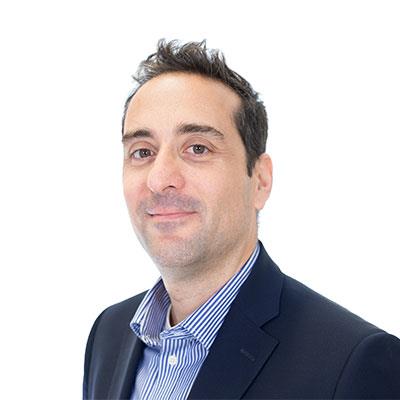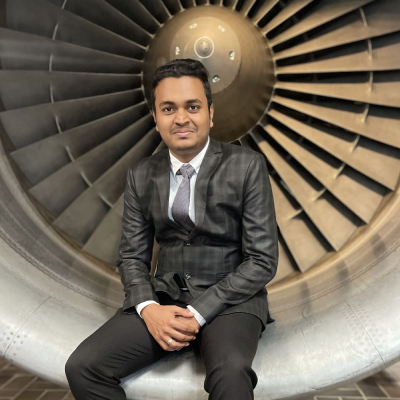- Aircraft Design
- Avionics Systems Design
- Structural Design (available for September intake only)
Overview
- Start dateSeptember or March
- DurationOne year
- DeliveryRefer to MSc course option pages for breakdown of assessment
- QualificationMSc
- Study typeFull-time
- CampusCranfield campus
Who is it for?
This MSc course provides a taught engineering programme with a focus on the technical, business and management aspects that encompass aircraft design in the civil and military aerospace sectors.
Teaching integrates a range of disciplines required for modern aircraft design, for example:
• Aircraft systems design,
• Avionic systems design,
• Design for manufacture,
• Initial aircraft design,
• Operation and cost,
• Propulsion integration,
• Stability and performance,
• Structural design and airframe.
Why this course?
Cranfield has been at the forefront of postgraduate education in aerospace engineering since 1946 with the Aerospace Vehicle Design programme being one of the original foundation courses of the College of Aeronautics. Graduates from this course also become members of the Cranfield College of Aeronautics Alumni Association (CCAAA), an active community which holds a number of networking and social events throughout the year.
You will have the opportunity to fly during a Student Experience Flight in our National Flying Laboratory Centre’s (NFLC) light aircraft. This flight experience will complement your MSc studies, focussing on the effects of controls, aircraft stability and angle of attack. During the flight you will have the opportunity to take control of the aircraft. Each experience is 2 to 3 hours in duration and includes a pre-flight safety briefing outlining the details of the manoeuvres to be flown, a flight of approximately 1 hour, and a post-flight debrief. Read Hari's blog on his flight experience.
One unique feature of the course is that we have a range of external examiners, from industry and from academia who continually assess the quality of the course.
Cranfield University is very well located for students from all over the world, and offers a range of library, IT and support facilities to support your studies. This enables students from all over the world to complete this qualification whilst achieving the right balance of work/life commitments.
Informed by industry
The course has an Industrial Advisory Committee with senior members from major UK aerospace companies, government bodies, and the military services. The committee meets twice a year to review and advise on course content, acquisition skills and other attributes which are deemed desirable from graduates of the course. Panel members have included professionals from organisations such as:
• Airbus,
• BAE Systems,
• BOEING,
• Department of National Defence and the Canadian Armed Forces,
• GKN Aerospace,
• Messier-Dowty,
• Royal Air Force,
• Royal Australian Air Force,
• Thales UK.
Course details
The taught component of the Aerospace Vehicle Design Master's is generally delivered from September to March (or March-August for the March intake). Modules for each option vary - please refer to MSc course option pages for descriptions of compulsory modules which must be undertaken. Students also have an extensive choice of optional modules to match their specific interests.
Course delivery
Refer to MSc course option pages for breakdown of assessment
Group project
The extensive group design project is a distinctive and unique feature of this course. This teamwork project takes place from September to March (or March-August for the March intake), and recreates a virtual industrial environment bringing together students with various experience levels and different nationalities into one integrated design team.
Each team member is given the responsibility for the detailed design of a significant part of the aircraft, for example, forward fuselage, fuel system, or navigation system. The project progresses a design from the conceptual phase through to the preliminary and detail design phases. Students will be required to run project meetings, produce engineering drawings and conduct detailed analyses of their design. Problem solving and project coordination must be undertaken on a team and individual basis. At the end of the project, the group is required to report and present findings to a panel of up to 200 senior engineers from industry and academia.
This element of the course is both realistic and engaging, and places the whole student group in a professional role as aerospace design engineers. Students testify that working as an integrated team on real problems is invaluable and prepares them well for careers in a highly competitive industry.
Watch past presentation videos to give you a taster of our innovative and exciting group projects:
Individual project
The individual research project element aims to provide the training necessary for you to apply knowledge from the taught elements to research, and takes place from March to September (or October-February for the March intake). The project may be theoretical and/or experimental and can be selected from a range of topics related to the course as suggested by teaching staff, your employer or even focused on your own area of interest.
Examples in conceptual aircraft design topics:
Aircraft configurations appropriate to hybrid-electric designs;
Design and testing of a bird like flapping wing ultra-light aircraft;
Design of a human powered helicopter;
Conceptual design of a high speed VIP transport helicopter;
Conceptual design of a hypersonic space launcher;
The conceptual design of a commuter seaplane;
An ultra-light tilt-wing-rotor aircraft for short take-off and landing capability;
Scale factor for the structure design of a BWB aircraft;
Design of a human powered helicopter (HPH);
Conceptual design of a two-seat training/touring 'Autogyro'.
Investigation in the numerical representation of damage on CFRP stiffened panels and behaviour under combined loading;
Delamination growth of carbon fibre composites under fatigue loads;
Experimental testing and numerical analysis of aircraft bolt jointed sandwich composites;
Strength prediction via testing and/or numerical simulation of bolted joints on fibre reinforced laminates;
Composite design considerations for trailing arm landing gears;
Fatigue behaviour of bolted joints on CFRP laminates following pull through failure;
Simulation of thermal residual stresses of CFRP wing;
Fatigue of buckled composite stiffened panel;
Dynamic Indentation of composite laminates;
Numerical modelling of through-thickness reinforced composite laminates;
Direct measurement of traction-separation law in fatigue damage of adhesive bonding;
Composite joints reinforced by composite fasteners.
Example aircraft systems design and analysis topics:
Systems/structure design modifications to increase manufacture and assembly rates;
The development of a hypersonic air-breathing propulsion model and the sizing and integration of a propulsion concept;
Environmental control system for aircraft with variable fresh air;
The design of a propeller for an electric microlight aircraft;
Investigation into the characteristics of a boundary layer ingestion system;
Tolerance design for mechanical assemblies in aerospace;
Environmental control system cabin air quality;
Fuel cell powered landing gear taxi system;
The design and integration of a next-generation propulsion concept;
An investigation into hypersonic air-breathing propulsion concepts and fuels;
The design of a propulsion system for an electric microlight aircraft;
Integrated sensors airframe design;
Tolerance design for mechanical assemblies in aerospace;
Aircraft wing sub-system design for modular assembly;
Design of a scaled test rig for integral wing fuel tank experiments;
Simulating fuel gauging performance using pressure sensors;
Design of hybrid electric fuel cell propulsion system for a training helicopter;
Thermal management of aircraft systems on future more electric aircraft with ultra-high bypass;
Future airliner cabin design;
Actuation system health monitoring;
Re-entry space vehicle – actuation system design and analysis;
Reducing wing fuel tank leak test times during assembly;
Aircraft level analysis of novel integrated thermal management systems.
Example avionic systems design and analysis topics:
Design and implementation of real time ADS-B system based on software defined radio;
4D integrated flight management and traffic avoidance software system;
Station keeping for flight formation in oceanic airspace;
Air to air refuelling formation behaviour;
Study and development of Air Traffic Control (ATC) tower simulation;
RPAS/UTM integration simulation;
Geo-fencing software system;
Intelligent diagnostics/prognostics (IDP) system;
Flight formation in oceanic airspace;
Development of navigation algorithms, based on surfaces of situation (non-autonomous);
Flight guidance systems to allow aircraft fly safely and efficiently within flow corridors;
Passenger egress simulation based on artificial intelligence approach;
Investigation into remote co-pilot concept for strategic single-pilot operation;
Slung load control;
FPGA implementation of gain scheduled controllers;
Flight control desktop demonstrator.
Teaching team
You will be taught by a wide range of subject specialists from the University and industry professionals who draw on their research and industrial expertise to provide stimulating and relevant input to your learning experience. The teaching on some taught modules is also supported by visiting speaker's lectures from both industry and the military. Former speakers have included senior representatives from Airbus, BAE Systems, Boeing and Eurocopter. The Course Director for the September intake for this programme is Jack Stockford. The March intake Course Director is Dr David Judt.
Accreditation
The Aerospace Vehicle Design MSc is accredited by Mechanical Engineers (IMechE) and the Royal Aeronautical Society (RAeS) on behalf of the Engineering Council as meeting the requirements for further learning for registration as a Chartered Engineer (CEng). Candidates must hold a CEng accredited BEng/BSc (Hons) undergraduate first degree to show that they have satisfied the educational base for CEng registration.
Your career
The MSc in Aerospace Vehicle Design is valued and respected by employers worldwide. The applied nature of this course ensures that our graduates are ready to be of immediate use to their future employer and has provided sufficient breadth of understanding of multi-discipline design to position them for accelerated career progression.
This course prepares graduates for careers as project engineers, systems design, structural design or avionic engineers in aerospace or related industries, with the aim of progressing to technical management/chief engineer roles. Graduates from the MSc in Aerospace Vehicle Design can therefore look forward to a varied choice of challenging career opportunities in the above disciplines.
Many of our graduates occupy very senior positions in their organisations, making valuable contributions to the international aerospace industry. Some example student destinations include BAE Systems, Airbus, Dassault and Rolls-Royce.
Cranfield’s Career Service is dedicated to helping you meet your career aspirations. You will have access to career coaching and advice, CV development, interview practice, access to hundreds of available jobs via our Symplicity platform and opportunities to meet recruiting employers at our careers fairs. Our strong reputation and links with potential employers provide you with outstanding opportunities to secure interesting jobs and develop successful careers. Support continues after graduation and as a Cranfield alumnus, you have free life-long access to a range of career resources to help you continue your education and enhance your career.
How to apply
Click on the ‘Apply now’ button below to start your online application.
See our Application guide for information on our application process and entry requirements.
My course prepared me to be an aircraft designer with good hands-on experience in design software, planning and budgeting for projects. Here I have learnt team work and project management skills. Using these skills I have set up a company back in India which focuses on the engineering applications of drones.
As a person who always had a dream of becoming a flight test engineer in the aerospace sector, I felt that the Flight Experience module - onboard Cranfield's Saab 340B, the flying classroom - was valuable as an initial insight on how a flight test is conducted within the industry. It really helped me to understand and verify the overall theory evolving the flight physics both in term of lift and drag, as well as the stability of the aircraft.
I chose to study Aerospace Vehicle Design MSc at Cranfield University as it was a unique course that would give me the opportunity to specialise in the design of aircraft. A highlight from my MSc would have to be the group design project and meeting new friends from all around the world. It made the entire journey a breeze, with a lot of support and many late nights. Once I have finished my MSc I will be starting new job at Airbus.
I chose to study at Cranfield University because of the feedback provided by former students, so as well as its ties with industry. The Aerospace Vehicle Design MSc was was exactly what I was looking for in terms of the theory covered in the taught modules and being able to apply this to the group and thesis projects.
A highlight from my time at Cranfield University would have to be taking part in the flying experience onboard the Cranfield acrobatic plane.








.ashx?h=400&w=400&la=en&hash=AE9FD4CF161A12723C148F896750A589F2572111)






